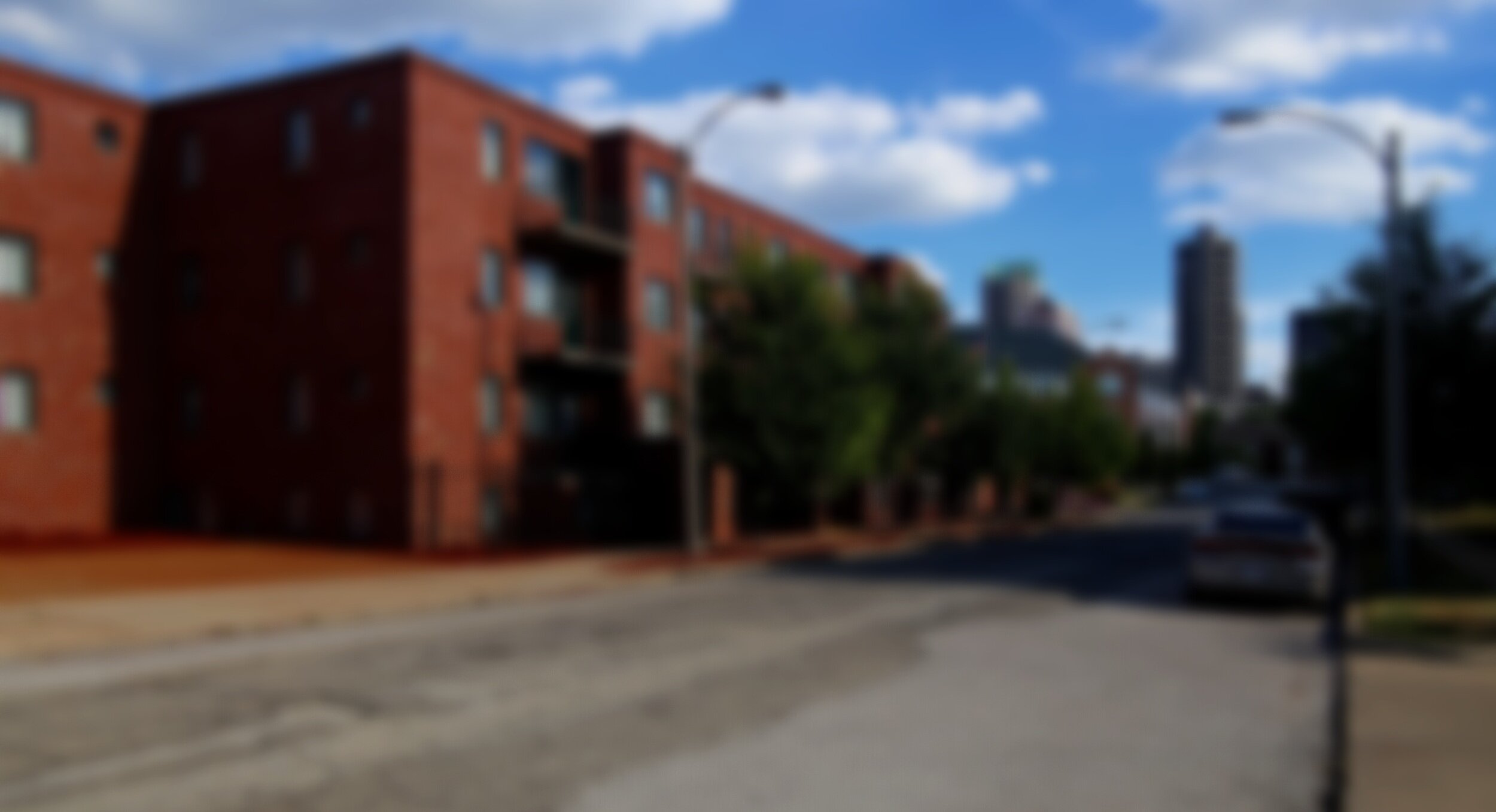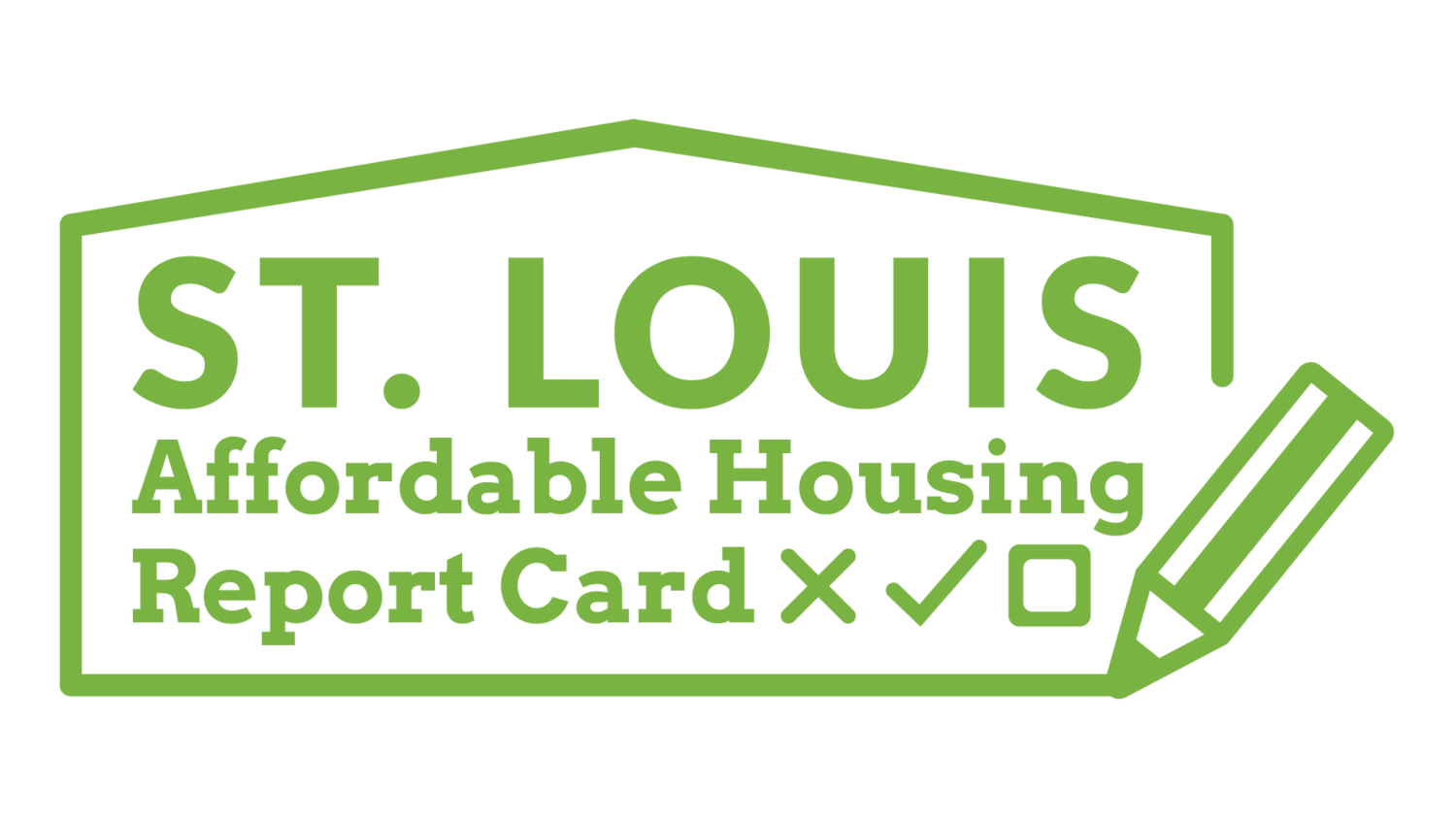
1.1 Maintaining Quantity
HIGHLIGHTS
There are approximately 38,000 affordable housing units supported by federal and state subsidies in St. Louis City and County.
Housing vouchers are the most common form of affordable housing, equalling 34% of all subsidized units.
82% of households living in subsidized housing make less than $20,000 in annual household income (less than 30% AMI).
Only 27% of households that earn less than 30% AMI have access to a federally funded or protected affordable housing unit.
Overview
Source: Snapshot of Subsidized Housing and Low Income Housing Tax Credit Database, U.S. Department of Housing and Urban Development.
Affordable housing preservation is achieved when subsidized and naturally occurring affordable housing opportunities continue to be available over time. Subsidized housing are affordable housing units whose construction, operations, occupancy, and/or maintenance are subsidized by the federal government. These units can be managed by either local government entities or private owners. The primary types of subsidized housing available in the St. Louis region include:
Housing Choice Vouchers
Low Income Housing Tax Credits (LIHTC)
Section 8 Rental Assistance
Public Housing
Section 202 Housing
In St. Louis City and County combined, residents of subsidized housing are:
83% Black, 11% white, 6% other races
34% are senior citizens (over the age of 62)
82% have a household income less than $20,000 per year
HUD Snapshot of Subsidized Housing, 2019
Types of subsidized housing
Housing Choice vouchers are the most common form of subsidized housing in the region, making up 34% of all subsidized units. We estimate the second most common form of subsidized housing are affordable units built in developments using Low Income Housing Tax Credits (LIHTC).
Economic characteristics of households living in subsidized housing
82% of households living in subsidized housing make less than $20,000 in annual household income (less than 30% AMI). Households in Saint Louis County that live in subsidized housing are slightly more likely to make more than $20,000 than those in St. Louis City.
Distribution of subsidized housing units
This map shows the distribution of place-based subsidized housing, including public housing, Section 8, and affordable units built using Low Income Housing Tax Credits (LIHTC).
Subsidized housing is concentrated in Midtown and Downtown St. Louis. There is subsidized housing available throughout North Saint Louis County and southeast portions of the City, while there are next to none available in West and South County.
Housing Choice Vouchers
Individuals and families with low incomes use housing choice vouchers to help pay for privately owned housing. There are both tenant-based and project-based vouchers. Tenant-based vouchers are assigned to a household and can be used anywhere, while project-based vouchers are typically assigned to units in developments that provide integrated supportive services to tenants such as the elderly, people with disabilities, or the formerly homeless. Housing Choice Voucher programs in St. Louis are managed predominately by the St. Louis City Housing Authority and the Housing Authority of St. Louis County. Smaller housing authorities include the Housing Authorities of the City of Olivette, City of Pagedale, City of Hillsdale, and the City of Kirkwood.
To be eligible, applicants meet income limits that vary based on household size, be U.S. citizens or eligible non-citizens, pass criminal background checks, and have paid off any debts to housing authorities. Housing vouchers are designated primarily for households with incomes less than 30% AMI, which varies based on household size.
1-person: $26,100
2-person: $29,800
3-person: $33,550
4-person: $37,250
5-person: $40,250
There are 13,060 housing vouchers being used in St. Louis City and County. To learn more about voucher outcomes, see 2.2 Supporting Mobility.
Maintaining Quantity: Housing Vouchers
The housing choice voucher program is designed to allow families to move without the loss of housing assistance, which inevitably means that a small percentage of housing vouchers allocated by local housing authorities are used outside the region. Housing authorities can apply to Congress additional “tenant protection” to make up for losses of other subsidized affordable housing units in the region or “special purpose” housing vouchers for populations such as homeless veterans or youth aging out of foster care.
Low Income Housing Tax Credit (LIHTC)
The Low-Income Housing Tax Credit (LIHTC) provides a federal tax credit to investors in affordable housing and is managed by the Internal Revenue Service (IRS). LIHTC developments are to have a percentage of their units affordable to people at different income levels for a period of 30 years. From 1986 to 1989, federal law required developers to maintain these affordability provisions for at least 15 years. Beginning in 1990, however, new LIHTC properties were required to preserve affordability for 30 years. According to the Missouri Housing Development Commission (MHDC), these options include:
40% of housing units are affordable to households at 60% of AMI; or
20% of housing units are affordable to households at 50% of AMI; or
40% of housing units are affordable to households between 20-80% of AMI, as long as the affordable unit’s households average less than 60% of AMI
There are 12,785 low-income restricted units within LIHTC developments in St. Louis City and County. The number of units designated for different income groups at each development is not shared in a public database.
Maintaining Quantity: LIHTC
The affordability restrictions of LIHTC units automatically expire after 30 years, after which property owners can convert their properties to market-rate units. After a minimum of 15 years, property owners can apply to leave the LIHTC program through a regulatory relief process. There are 721 LIHTC housing units that were built before 1990 whose affordability restrictions have definitely expired, however, it is not clear how many of those units are being rented at market rate.
Section 8 Rental Assistance
Section 8 rental assistance are housing vouchers attached to a specific unit in a multifamily building owned by a private landlord who has contracted with the local housing authority. This program was initially designed to ensure low-income households access to newly constructed or rehabbed developments. Section 8 rental assistance is targeted toward households whose income is less than 50% AMI or less than 30% AMI.
There are 7,532 units enrolled in Section 8 in St. Louis City and County
Maintaining Quantity: Section 8 Rental Assistance
The local housing authorities sign multi-year contracts with property owners, with the option to renew. Funding is not available for new contracts, only for the renewal of existing contracts that were made between the start of the program in 1968 and when the authority to enter into new contracts was repealed in 1983. It is inevitable that units will be lost as properties age if property owners lack funding to address significant maintenance and rehabilitation costs.
Public Housing
Public housing is affordable housing units in buildings managed by Housing Authorities. A low-income family whose annual income does not exceed 80 percent of the area median income for the area is eligible for public housing. In the City, applicants receive preference if they are employed, elderly, disabled, veteran, homeless, or enrolled/recently graduated from a job training or educational program.
There are 3,053 units of public housing in St. Louis City and County.
Maintaining Quantity: Public Housing
Housing authorities can demolish or dispose of properties in their portfolio upon approval by the Missouri Housing Development Corporation. In addition, housing units are frequently kept vacant due to unresolved maintenance issues, though neither Housing Authority could give definitive estimates on the exact number of units or length of time out of service. In an attempt to address this issue, we share data only on occupied public housing units, not available but potentially unoccupied units.
In 2019, Saint Louis County sought to remove two developments from their portfolio: Arbor Hill Apartments (70 units) and the Wellston Housing Authority (201 units). Their proposal to transition Arbor Hill Apartments to private ownership using the Rental Assistance Demonstration program was not approved by the Missouri Housing Development Corporation. The Wellston Housing Authority buildings have been sold to a private developer under contract to rehabilitate the units as affordable housing.
Section 202 Housing
Section 202 housing are units created by nonprofit developers through federal grants in order to create affordable housing with supportive services for the elderly. There are 1,821 units of Section 202 housing in St. Louis City and County.
Maintaining Quantity: Section 202
The capital advances HUD provides to sponsors are interest-free and do not have to be repaid as long as the project serves very low-income elderly persons for 40 years. There are no projects that have met that expiration date for maintaining protected affordable status since the program was created only in 2010.
Non-subsidized
Non-subsidized affordable housing are units that are “naturally” affordable and are managed by private property owners.
0-30% MFI: Affordable housing for families with incomes less than $22,400 costs less than $549 per month, including rent and utilities.
31-50% MFI: Affordable housing for families with incomes between $22,400 and $37,350 costs less than $999 per month.
51-80% MFI: Affordable housing for families with incomes between $37,350 and $59,700 costs less than $1,499 per month.
81-100% MFI: Affordable housing for families with incomes between $59,700 and $89,550 costs less than $1,999 per month.
Data Source: 2019 American Community Survey 5-year estimates
According to the American Community Survey estimates for St. Louis City and County, there are:
19,460 rental units that cost less than $549 per month.
118,019 rental units that cost less than $999 per month.
181,738 rental units that cost less than $1,499 per month.
194,168 rental units that cost less than $1,999 per month.
Data Source: 2019 American Community Survey 5-year estimates
For homeowners, there are:
71,612 owner-occupied units that cost less than $599 per month.
144,294 owner-occupied units that cost less than $999 per month.
229,523 owner-occupied units that cost less than $1,499 per month.
280,672 owner-occupied units that cost less than $1,999 per month.
Maintaining Quantity: Non-subsidized
Vacancy: When unsubsidized housing units cost more to maintain or keep up on property taxes than they bring in rental income, they are at higher risk of becoming vacant. Vacant properties are at higher risk of being permanently removed from the housing supply through demolition. According to 2019 American Community Survey estimates, there are nearly 38,000 long-term vacant residential units in the St. Louis region.
For more information about vacancy in St. Louis City, visit the St. Louis Vacancy Collaborative’s Vacant Property Explorer. Their algorithm, which is based on records of various city departments, records 9,109 vacant residential buildings in the City of St. Louis as of July 2021. The city neighborhoods with the highest relative percentage of buildings that are vacant include Walnut Park West (21%), Kingsway West (20%), Greater Ville (19%), Kingsway East (19%) and Hyde Park (19%), all of which are in North City.
Demolitions: Data on demolitions are unevenly tracked across the region. The City tracks demolitions, including those initiated by the City on dangerous properties. These are shared online in the St. Louis Vacancy Collaborative’s Demolition Tracker. There were 657 demolitions completed in 2019 and 452 in 2020. However, Saint Louis County government does not request or receive city-level data on demolitions for its municipalities.
Data Recommendations
To improve our ability to measure quantity of affordable housing units, we recommend…
Saint Louis County develop the equivalent of St. Louis City’s Vacant Property Explorer.
Saint Louis County begin tracking the number of residential demolitions completed by municipalities within Saint Louis County.
St. Louis Housing Authority and Housing Authority of Saint Louis County report the number of public housing units that are not occupied due to maintenance issues.






